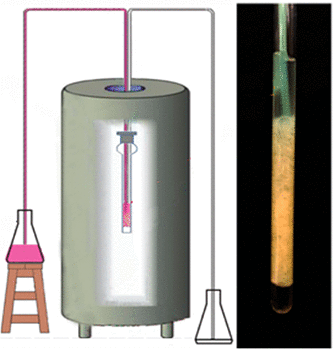当前位置:
X-MOL 学术
›
Biochemistry
›
论文详情
Our official English website, www.x-mol.net, welcomes your
feedback! (Note: you will need to create a separate account there.)
Real-Time In-Cell Nuclear Magnetic Resonance: Ribosome-Targeted Antibiotics Modulate Quinary Protein Interactions
Biochemistry ( IF 2.9 ) Pub Date : 2018-01-08 00:00:00 , DOI: 10.1021/acs.biochem.7b00938 Leonard Breindel 1 , Christopher DeMott 1 , David S. Burz 1 , Alexander Shekhtman 1
Biochemistry ( IF 2.9 ) Pub Date : 2018-01-08 00:00:00 , DOI: 10.1021/acs.biochem.7b00938 Leonard Breindel 1 , Christopher DeMott 1 , David S. Burz 1 , Alexander Shekhtman 1
Affiliation

|
How ribosome antibiotics affect a wide range of biochemical pathways is not well understood; changes in RNA-mediated protein quinary interactions and consequent activity inside the crowded cytosol may provide one possible mechanism. We developed real-time (RT) in-cell nuclear magnetic resonance (NMR) spectroscopy to monitor temporal changes in protein quinary structure, for ≥24 h, in response to external and internal stimuli. RT in-cell NMR consists of a bioreactor containing gel-encapsulated cells inside a 5 mm NMR tube, a gravity siphon for continuous exchange of medium, and a horizontal drip irrigation system to supply nutrients to the cells during the experiment. We showed that adding antibiotics that bind to the small ribosomal subunit results in more extensive quinary interactions between thioredoxin and mRNA. The results substantiate the idea that RNA-mediated modulation of quinary protein interactions may provide the physical basis for ribosome inhibition and other regulatory pathways.
中文翻译:

实时细胞核磁共振:核糖体靶向的抗生素调节五聚蛋白相互作用。
核糖体抗生素如何影响广泛的生化途径尚不清楚。RNA介导的蛋白质五元相互作用的改变以及在拥挤的胞质溶胶内部的活动可能提供了一种可能的机制。我们开发了实时(RT)细胞内核磁共振(NMR)光谱,以响应外部和内部刺激,监测蛋白质五元结构的时间变化,≥24小时。RT细胞内NMR由一个生物反应器组成,该反应器在5毫米NMR管内包含凝胶包裹的细胞,用于连续交换培养基的重力虹吸管和用于在实验过程中向细胞提供营养的水平滴灌系统。我们表明,添加与小核糖体亚基结合的抗生素会导致硫氧还蛋白和mRNA之间更广泛的三元相互作用。
更新日期:2018-01-08
中文翻译:

实时细胞核磁共振:核糖体靶向的抗生素调节五聚蛋白相互作用。
核糖体抗生素如何影响广泛的生化途径尚不清楚。RNA介导的蛋白质五元相互作用的改变以及在拥挤的胞质溶胶内部的活动可能提供了一种可能的机制。我们开发了实时(RT)细胞内核磁共振(NMR)光谱,以响应外部和内部刺激,监测蛋白质五元结构的时间变化,≥24小时。RT细胞内NMR由一个生物反应器组成,该反应器在5毫米NMR管内包含凝胶包裹的细胞,用于连续交换培养基的重力虹吸管和用于在实验过程中向细胞提供营养的水平滴灌系统。我们表明,添加与小核糖体亚基结合的抗生素会导致硫氧还蛋白和mRNA之间更广泛的三元相互作用。











































 京公网安备 11010802027423号
京公网安备 11010802027423号